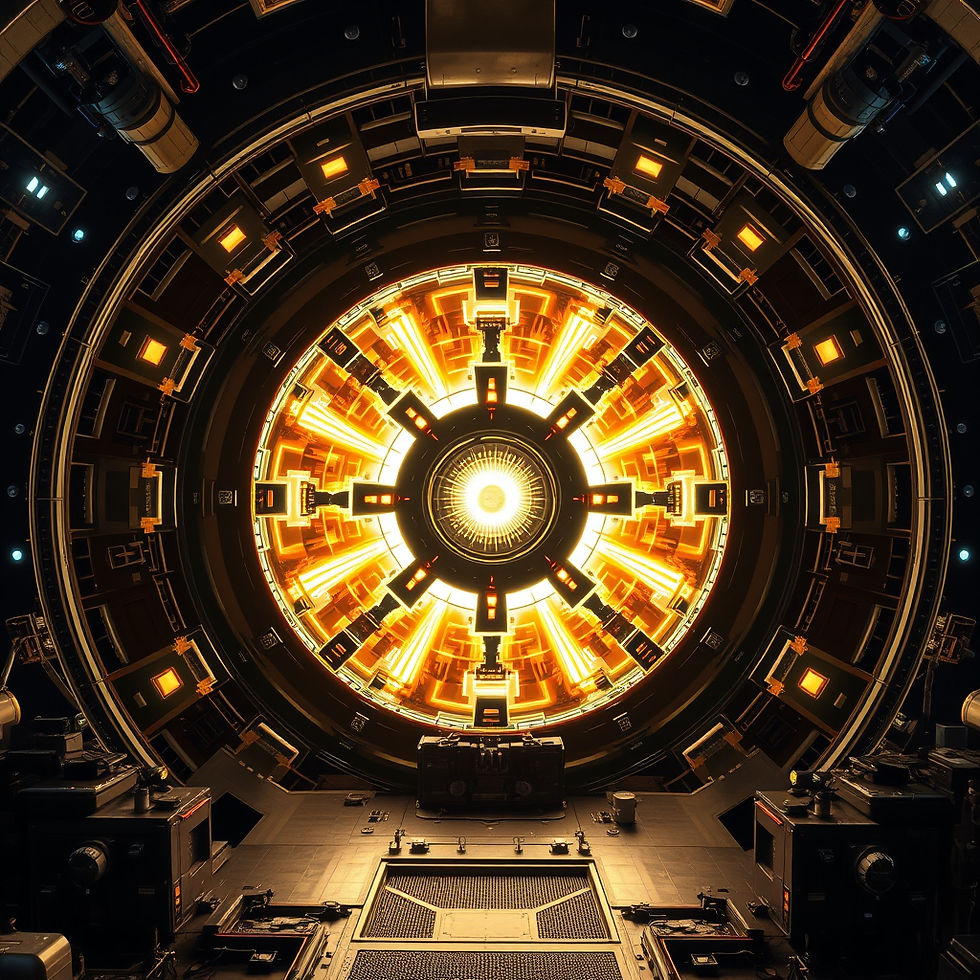Advancing Zero-Point Energy Navigation: A Renewed Path Forward with ZPF Technologies
- Douglas Miller
- Jul 22
- 2 min read
Updated: Aug 14

Executive Summary
Zero-point energy (ZPE) research, pioneered in the late 20th century by visionaries like Hal Puthoff, promised a paradigm shift in energy and propulsion. Yet, despite substantial investments, government contracts, and peer-reviewed publications, tangible outcomes remain elusive in 2025. This whitepaper posits that early efforts faltered due to a focus on direct ZPE extraction, insufficient grounding in Stochastic Electrodynamics (SED), and the absence of modern nanofabrication capabilities. ZPF Technologies LLC revives this dream with a superior foundation: SED’s emergent constants framework (integrating Haisch-Rueda-Puthoff’s 1994 inertia model with Setterfield’s variable constants hypothesis), a navigation-based method modulating the vacuum rather than extracting from it, and cutting-edge MEMS technology enabling precise ZPE engineering. Our ZPF Array—offers a testable, scalable platform for quantum vacuum propulsion with efficiency boosts via ZPF-induced nuclear pre-excitation. With a better shot than prior eras, we invite investors and collaborators to fuel this revolution.
The Legacy of Early ZPE Research: Promise and Pitfalls
In the 1980s-1990s, Hal Puthoff’s work at SRI International and beyond ignited ZPE enthusiasm. His 1994 paper with Haisch and Rueda, “Inertia as a zero-point-field Lorentz force,” published in Physical Review A, laid SED foundations, suggesting inertia and gravity arise from ZPF interactions. Puthoff discussed heavy investors, daily lab experiments (e.g., condensed-charge with Ken Shoulders), Air Force/DoD contracts, and publications in elite journals. He envisioned the 21st century as ZPE’s era, powering aircraft carriers, unplugged appliances, and Middle Eastern energy transitions. By 2025, results are scant: Patents like US5018180 (1991, electron clusters) and US7379286 (2008, Casimir ZPE) exist but yielded no commercial devices. Efforts “went dark” post-1990s—partially classified (e.g., AATIP reports on vacuum engineering)—due to practical failures: Thermodynamic barriers (no net work from equilibrium ZPF), micro-yields (~fJ from Casimir), and investor fatigue amid hype without prototypes. Nanofab limitations (pre-2000s MEMS >μm scales) prevented precision vacuum modulation. Puthoff’s extraction focus overlooked SED’s full potential for navigation—tuning ZPF gradients without direct harvest.
Why ZPF Technologies Succeeds Where Others Stalled
ZPF Technologies builds on HRP’s SED inertia model but integrates Setterfield’s insights: Constants (c, ħ, α) vary with ZPF density, as ancient redshift data suggests higher historical c in weaker ZPF vacuums. This resolves the vacuum catastrophe (QED’s 10^{120} mismatch) by treating ZPF as finite and tunable. Our method: Navigation via ZPF modulation—not extraction—avoids thermodynamic pitfalls, borrowing fluctuations for effects like thrust (0.6-2.4 N) and anti-grav (1-9 N) via Virtual Particle Pair Polarization. Modern nanofab enables millions of cavities (10-25 nm precision), far beyond 1990s tech.
The Array: A MEMS platform with GHz-actuated wedges, plasmonics, and H₂ flow, yielding ZPF-induced nuclear pre-excitation—trace fusion catalysis boosting efficiency 10-20% without overunity. Simulations confirm: Barrier drops ~15-30%, tunneling surges ~10^3, thrust gains ~40%. With $1M raise underway (grants, crowdsourcing, investors), we’re seeking prototyping partners, such as ERAU—positioned for grants (NSF STTR) and commercialization.
Call to Action: Partner in the Vacuum Revolution
Grand, unfulfilled promises of the past left investors fatigued and, unfortunately, relegated this field to the realm of pseudoscience. But we know that the scientific process is all about learning from past mistakes and asking better questions moving forward. ZPF Technologies picks up the mantle and offers grounded, testable advancement in this field. Join us in this exciting endeavor! Contact: Douglas Miller at zpf.technologies@gmail.com for the full EDP and collaboration opportunities.



As RP Feynman said...There is plenty of room at the bottom..Ron Kita Chiralex US8901943